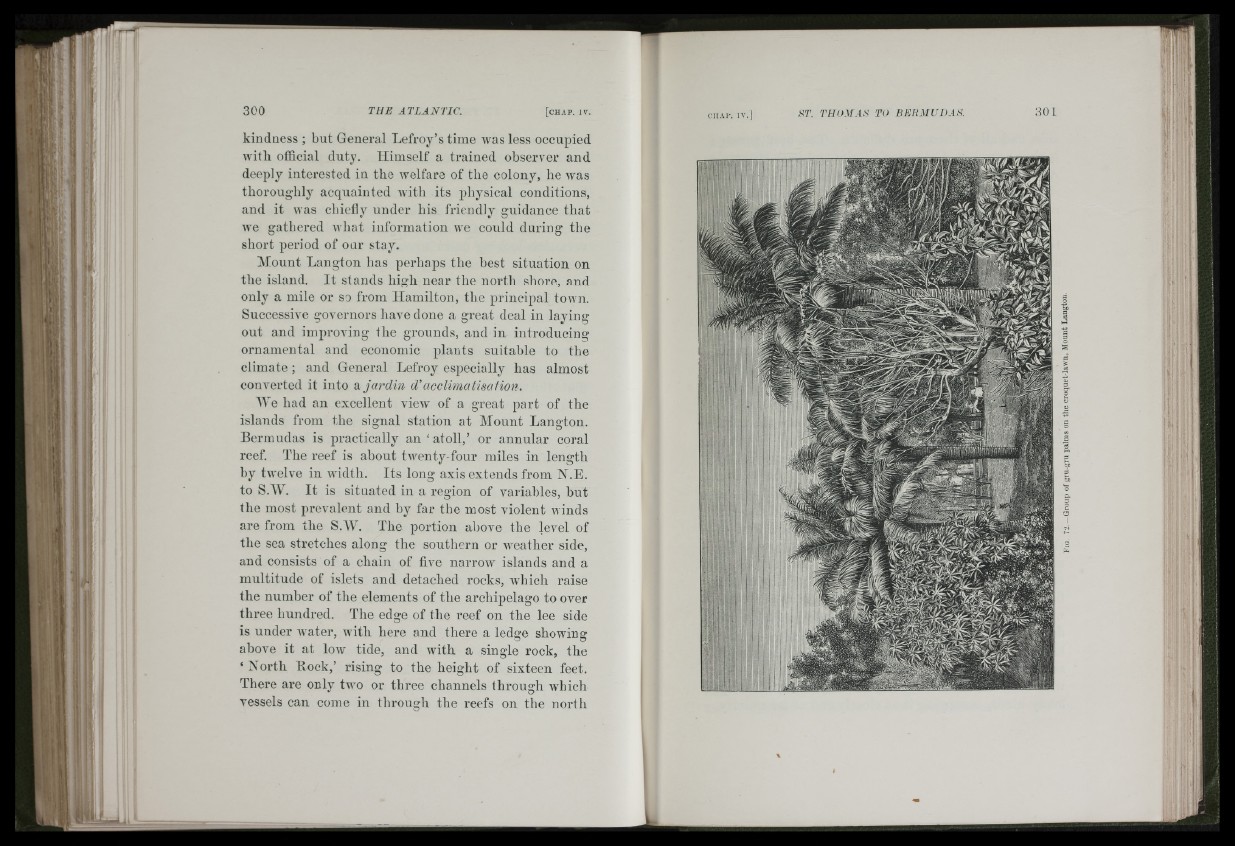
kindness ; but General Lefroy’s time was less occupied
Avitli official duty. Himself a trained observer and
deeply interested in the welfare of the colony, he was
thoroug-hly acquainted with its physical conditions,
and it was cliiefly under his friendly guidance that
we gathered what information vve could during the
short period of oar stay.
Mount Langton has perhaps the best situation on
tbe island. It stands high near tbe north shore, and
only a mile or so from Hamilton, the principal town.
Successive governors liave done a great deal in laying
out and improving the grounds, and in introducing
ornamental and economic plants suitable to the
climate; and General Lefroy especially has almost
converted it into Sl jardin d' acclimatised ion.
We had an excellent view of a great part of the
islands from the signal station at Mount Langton.
Bermudas is practically an ‘ atoll,’ or annular coral
reef. The reef is about twenty-four miles in length
by twelve in width. Its long axis extends from N.L.
to S.W. It is situated in a region of variables, but
the most prevalent and by far tbe most violent winds
are from tbe S.IV. The portion above the level of
the sea stretches along the southern or Aveather side,
and consists of a chain of five narroAV islands and a
multitude of islets and detached rocks, which raise
the number of the elements of the archipelago to over
three hundred. The edge of the reef on the lee side
is under Avater, with here and there a ledge showing
above it at Ioav tide, and Avith a single rock, the
‘ North Hock,’ rising to the height of sixteen feet.
There are only Iavo or three channels through which
vessels can come in through the reefs on the north